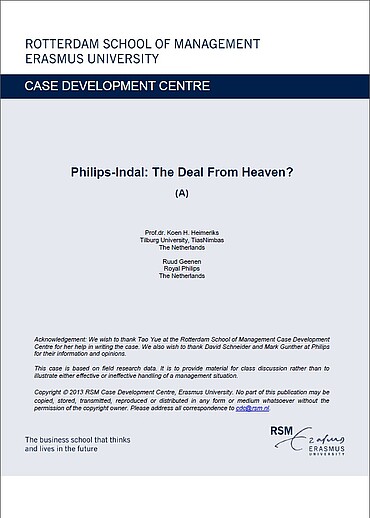Abstract
Philips’ new venture integration (NVI) department is aware of the fact that many acquisitions turn into “deals from hell” instead of “deals from heaven.” Its post-merger integration specialists have learned that cost synergies are far easier to realize than sales (or growth) synergies. Stimulated by the urge to grow, the NVI department has developed a new methodology called the “sales integration approach” to realize sales (or growth) synergies. It tries to implement this approach during the acquisition integration of Indal, a Spanish lighting company. The main challenge is presented by the shift in acquisition-integration capability following Philips’ evolved corporate strategy. While historically Philips had a substantive acquisition program, Philip’s new CEO has stressed the need for organic growth and set the stage for a series of medium and small acquisitions. Philips needs to become more customer-centric to increase corporate growth. This has required a focus not just on cost synergies (e.g., economies of scale and increased efficiency), but also on capturing sales (or growth) synergies. Philips-Indal must choose to defend regions in which it has a strong position or target regions where it has a weaker position. Furthermore, Philips’ post-merger integration leader must choose an organizational structure for Philips-Indal and convince Indal’s executive team to adopt the NVI department’s sales integration approach. This case can be used with Lighting Up Philips' Asian Entertainment Activities (B)
Citation Note
Based on field research; 18 pages.
Follow the 'handle' link to access the Case Study on RePub.
For EUR staff members: the Teaching Note is available on request, you can contact us at rsm.nl/cdc/contact/
For external users: follow the link to purchase the Case Study and the Teaching Note.
